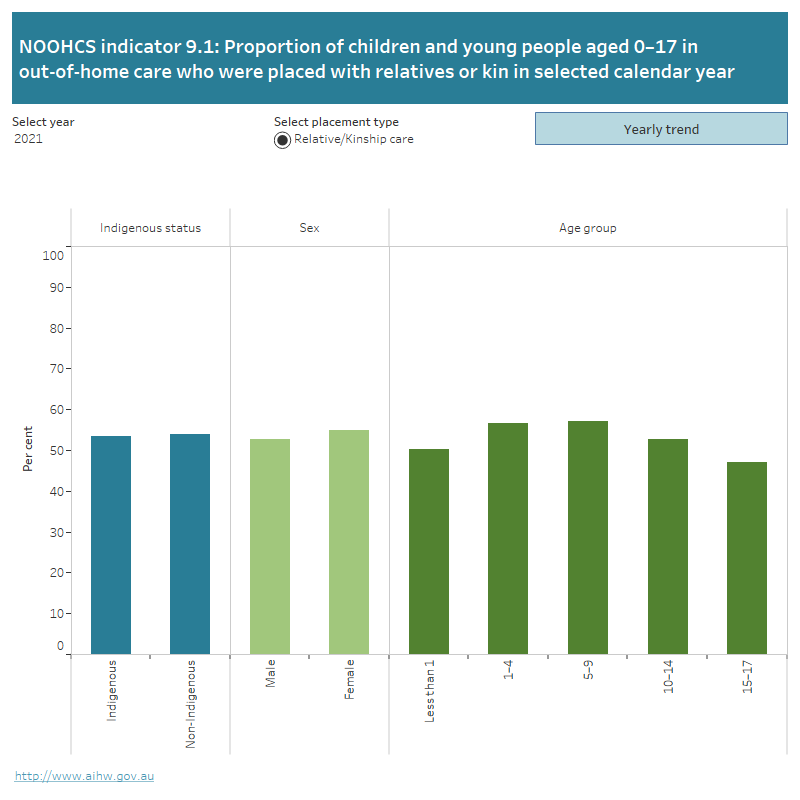9.1 Kinship placement
Care should be taken when interpreting the time series for this indicator, as it has been affected by the implementation of the national definition of out-of-home care.
As of 2019, all states and territories have adopted a nationally consistent definition of out-of-home care which excludes children on third-party parental responsibility orders, children on immigration orders, young people aged 18 and over, and children in pre-adoptive placements from counts of children in out-of-home care.
Out-of-home care data from the 2018–19 reporting period onwards are based on this nationally agreed definition and, where possible, back cast to 2016–17. These should not be compared with data for previous years or previously published out-of-home care data.
For more information on the national definition of out-of-home care, see Child protection Australia 2018–19.
Out-of-home care is provided across Australia for children who are unable to live with their families, generally because of child abuse or neglect or because their family is unable to care for them (for example, due to illness or incarceration).
Placing children with relative/kin helps them to maintain their relationships with people who are important to them, such as immediate and extended family where it is safe to do so. These relationships are important to the development of their identity, as well as their feeling of belonging in the world.
Trend data: For all indicator displays, the yearly trend is limited to indicators with 3 or more years (including the current year) of comparable time series data. To see the trend click on “Yearly Trend” button on the display. Where 3 or more years of comparable data including the most recent year is not available, a “No time series data” message is shown on the display.
The first figure shows the proportion of children and young people aged 0–17 in out-of-home care who are placed with relatives or kin by Indigenous status, sex and age group. Data can be selected by year from 2010 to 2021.
The second figure is a line graph showing the proportion of children and young people aged 0–17 in out-of-home care who are placed with relatives or kin from 2017 to 2021. Data can be selected by Indigenous status, age group or sex.

Source: AIHW Child Protection Collection
See the supplementary data tables for further information and footnotes about these data.
For further information on kinship placement (of Indigenous children) see The Aboriginal and Torres Strait Islander Child Placement Principle Indicators 2018-19: measuring progress.
Indicator technical specifications
The information below provides technical specifications for the summary indicator data presented in the quick reference guide.
| Definition | Data source | |
|---|---|---|
| Numerator | Number of children aged 0-17 years in out-of-home care at 30 June who were placed with relatives/kin | AIHW National Child Protection Data Collection |
| Denominator | Number of children aged 0-17 years in out-of-home care at 30 June | AIHW National Child Protection Data Collection |
Explanatory notes
Differences in legislation, policies and practices in relation to out-of-home care across jurisdictions and over time can affect the number and rate of children in out-of-home care and so caution must be taken when interpreting the data.


